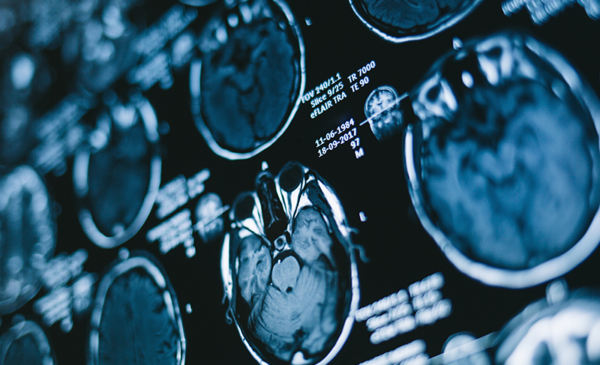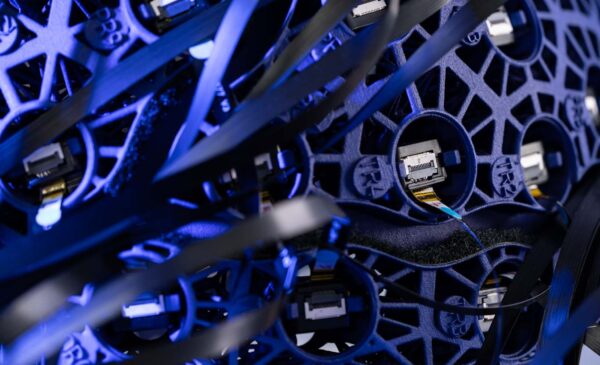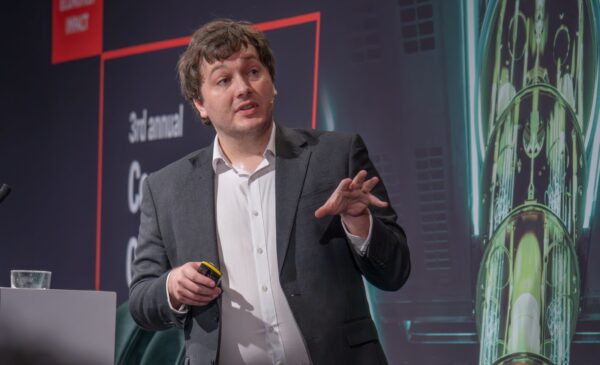It has been nearly three years since UK Quantum Technology Hub Sensors and Timing researchers at the University of Nottingham published a paper in Nature on non-invasive imaging techniques to investigate brain function. Since then, Dr Elena Boto and the academic team in Nottingham, along with David Woolger at Magnetic Shields Ltd, set up Cerca Magnetics Ltd, a spin-out company capitalising on this ground-breaking research which aims to bring wearable quantum-enabled brain scanners to both a research and clinical commercial market.
Fully understanding how the human brain works, and what functions differently in disease, remains a mystery to neuroscientists and clinicians alike. Considerable research is needed on this most complex part of the body, which consists of a network of ~100 billion electrical cells – neurons – passing electrical pulses to each other via around 700 trillion connections.
“That is how it communicates”, says Dr Elena Boto, Chief Technology Officer at Cerca. “Neurons fire currents and this is what we want to look at.”
One of the key areas of research at the Quantum Technology Hub is furthering quantum research in magnetometry, specifically in healthcare. Hub researchers are exploiting Magnetoencephalography (MEG) techniques, which measures the magnetic fields produced by the brain’s electrical currents. This differs from more conventional techniques, for example fMRI (Functional Magnetic Resonance Imaging) technology, which measures changes in blood flow to active brain regions.
“MEG brings what is not achievable with current technologies. It tells you how the brain functions whilst providing better resolution than traditional modalities. Existing MEG technology is not used in hospitals because it is expensive given its cryogenic form, and its current rigid format is difficult to use on patients.”Dr Elena Boto
Hub researchers at the renowned Sir Peter Mansfield Imaging Centre at the University of Nottingham have developed a wearable brain scanner by exploiting optically-pumped magnetometers (OPM), a new type of non-cryogenic quantum-enabled sensor. The scanner’s lightweight wearability makes it particularly useful for children and those with movement disorders, making this technology revolutionary for functional neuroimaging.
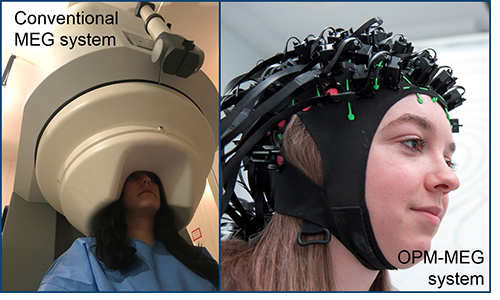
Epilepsy is a key example of how this technology will impact diagnosis and treatment. David Woolger, CEO at Cerca, explains that currently “the only medically validated use for existing MEG is epilepsy. MEG scanners are used to identify areas of the brain causing seizures, helping surgeons to remove the correct part during surgery. Epilepsy surgery is high-risk, and wearable MEG will help to make this more accurate.”
“Epilepsy is one proven application, but there are others which are yet to be medically validated, such as assessing brain injury and dementia.”
Enabling better planning for those undergoing epilepsy surgery with OPM-MEG has also been the subject of a Quantum Technology Hub Partnership Resource Fund project led by researchers at the UCL Queen Square Institute of Neurology in collaboration with the University of Nottingham.
The paper published in Nature in March 2018 sparked off considerable excitement in the Biomagnetism community. “This made us think” – says Elena “could we use this technology to move away from traditional systems? We already worked with Magnetic Shields, who were really keen to be on board with this. This is how we formed a spin-out.”
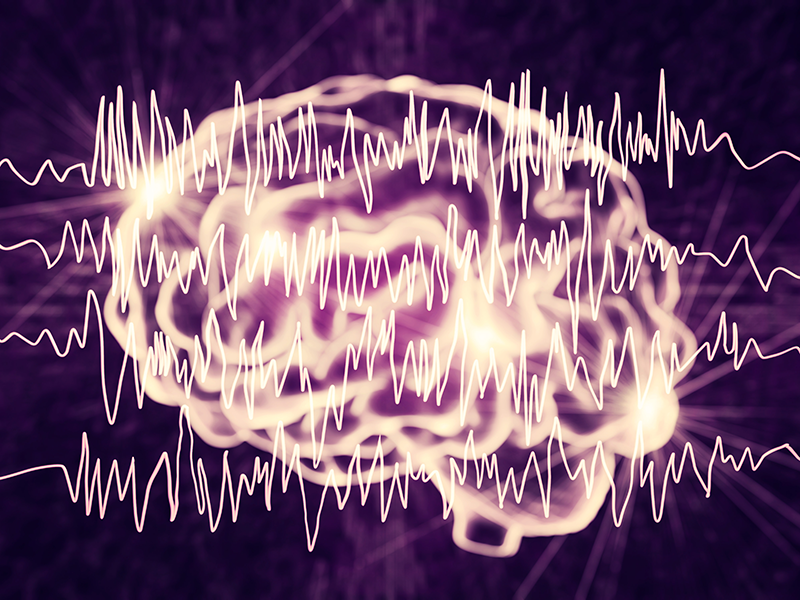
The Hub’s cross-disciplinary research expertise helped to introduce David to researchers interested in incorporating smart shielding into their technologies. “I collaborated with Moataz Attallah for the QT Shield project, which is how I met Elena and the Nottingham team. Matt Brookes presented his work on MEG at a Hub event, and he needed shielding for this work.”
“It was clear that these sensors were going to be a step-change, and we worked together to create a magnetically shielded room with a DC field an order of magnitude lower than other commercial competitors, this very low field facilitates acquisition of data from the OPM-MEG system.”
One of the key aims of the Hub is to create spin-out companies to enable the translation of research into industry. Several companies, such as Aquark and Covesion, have successfully sold products developed with expertise and knowledge gained from the Hub’s extensive research base. Cerca Magnetics already have orders for two systems Canada and the UK. The Canadian system is going to be used to study autism in children.
“Working in the Hub has been really helpful in terms of exchanging knowledge to develop sensors for our system” explains Elena.
David adds: “The Hub is very good at building an ecosystem of companies in the UK. It’s incredibly useful having these discussions – some of them are so valuable but you don’t realise until a few years later.”
So what are the eventual hopes for Cerca?
“My hope is to be able to install our system around the world, and bring OPM-MEG to places where it was impossible before. The more people who use this, the more is known about brain function. We need to build research to convince people that MEG can be used as a clinical tool” says Elena.
David adds: “I am motivated by the difference this technology can make to society. In the UK, we are great at research, but we also need to be great at bringing things to market, and developing this technology in the UK will be highly beneficial.”

